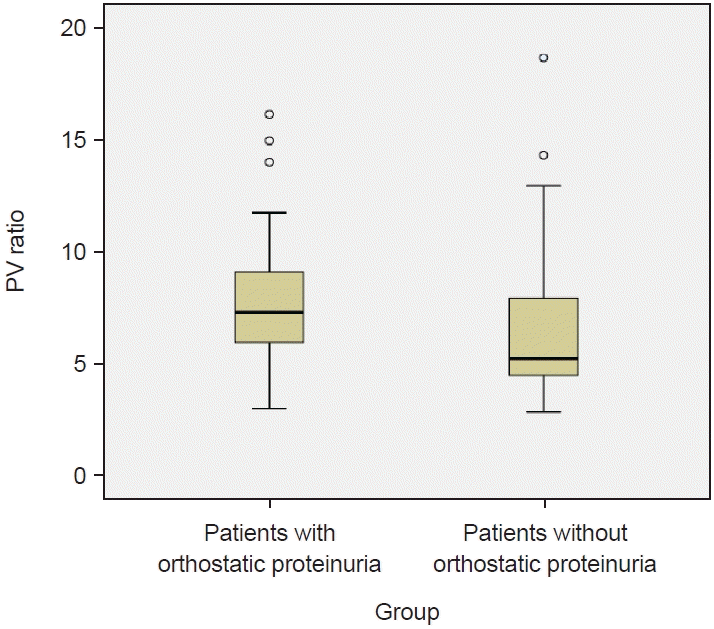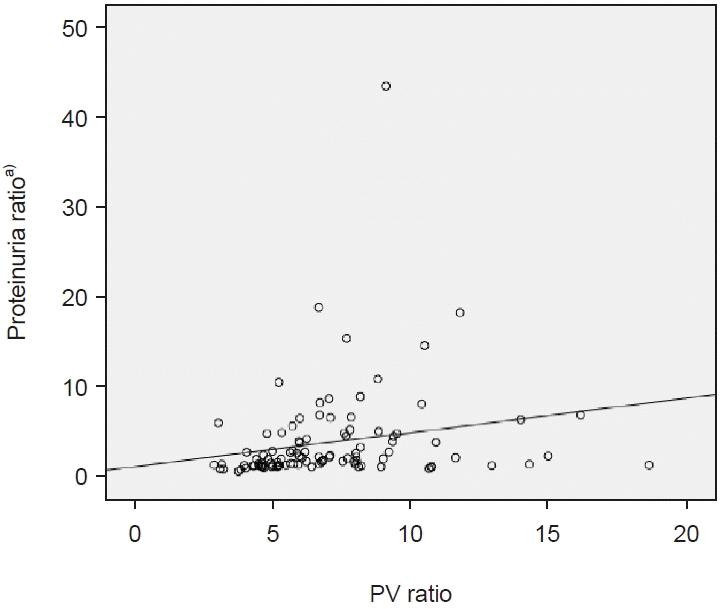1. Ananthan K, Onida S, Davies AH. Nutcracker syndrome: an update on current diagnostic criteria and management guidelines. Eur J Vasc Endovasc Surg. 2017; 53:886–94.

2. Kalantar DS, Park SJ, Shin JI. Nutcracker syndrome in children: review of symptom, diagnosis, and treatment. Child Kidney Dis. 2023; 27:89–96.

3. Kim SH. Doppler US and CT diagnosis of nutcracker syndrome. Korean J Radiol. 2019; 20:1627–37.

4. Park SJ, Lim JW, Cho BS, Yoon TY, Oh JH. Nutcracker syndrome in children with orthostatic proteinuria: diagnosis on the basis of Doppler sonography. J Ultrasound Med. 2002; 21:39–45.
5. Cho BS, Choi YM, Kang HH, Park SJ, Lim JW, Yoon TY. Diagnosis of nut-cracker phenomenon using renal Doppler ultrasound in orthostatic proteinuria. Nephrol Dial Transplant. 2001; 16:1620–5.

6. Gulleroglu NB, Gulleroglu K, Uslu N, Baskin E. Left renal vein entrapment in postural proteinuria: the diagnostic utility of the aortomesenteric angle. Eur J Pediatr. 2022; 181:3339–43.

7. Mazzoni MB, Kottanatu L, Simonetti GD, Ragazzi M, Bianchetti MG, Fossali EF, et al. Renal vein obstruction and orthostatic proteinuria: a review. Nephrol Dial Transplant. 2011; 26:562–5.

8. Shin JI, Park SJ, Cho MH, Kim JH. Left renal venographic findings in children with orthostatic proteinuria. Nephrol Dial Transplant. 2011; 26:2715.

9. Ekim M, Bakkaloglu SA, Tumer N, Sanlidilek U, Salih M. Orthostatic proteinuria as a result of venous compression (nutcracker phenomenon): a hypothesis testable with modern imaging techniques. Nephrol Dial Transplant. 1999; 14:826–7.
10. Lee SJ, You ES, Lee JE, Chung EC. Left renal vein entrapment syndrome in two girls with orthostatic proteinuria. Pediatr Nephrol. 1997; 11:218–20.

11. Shintaku N, Takahashi Y, Akaishi K, Sano A, Kuroda Y. Entrapment of left renal vein in children with orthostatic proteinuria. Pediatr Nephrol. 1990; 4:324–7.

12. Leung AK, Wong AH, Barg SS. Proteinuria in children: evaluation and differential diagnosis. Am Fam Physician. 2017; 95:248–54.
13. Kim SH, Cho SW, Kim HD, Chung JW, Park JH, Han MC. Nutcracker syndrome: diagnosis with Doppler US. Radiology. 1996; 198:93–7.

14. Park SJ, Shin JI. Low body mass index in nutcracker phenomenon: an underrecognized condition. Kidney Int. 2013; 84:1287.

15. El-Sadr AR, Mina E. Anatomical and surgical aspects in the operative management of varicocele. Urol Cutaneous Rev. 1950; 54:257–62.
16. Hersey N, Masood J, Papatsoris AG, Staios D, Buchholz N, Albanis S. ‘The Nutcracker Phenomenon’: case report and review of literature. Curr Urol. 2007; 1:110–2.
17. de Schepper A. "Nutcracker" phenomenon of the renal vein and venous pathology of the left kidney. J Belge Radiol. 1972; 55:507–11.
18. Berthelot JM, Douane F, Maugars Y, Frampas E. Nutcracker syndrome: a rare cause of left flank pain that can also manifest as unexplained pelvic pain. Joint Bone Spine. 2017; 84:557–62.

19. Mohammadi A, Ghasemi-Rad M, Mladkova N, Masudi S. Varicocele and nutcracker syndrome: sonographic findings. J Ultrasound Med. 2010; 29:1153–60.






 PDF
PDF Citation
Citation Print
Print



 XML Download
XML Download